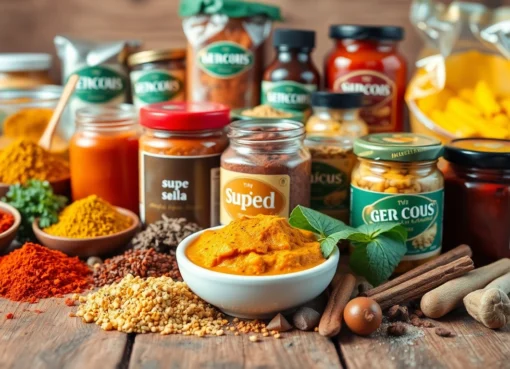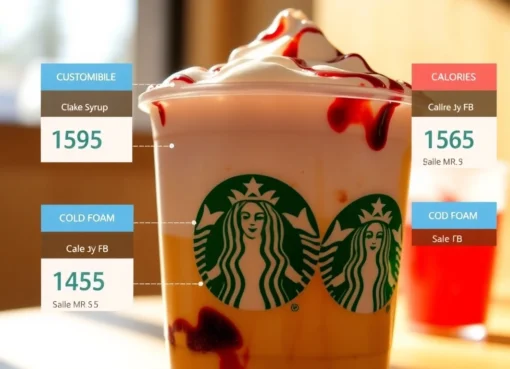How a Leading Recipe Manager App Simplifies Your Cooking and Meal Planning

Understanding the Core Features of a Reliable Recipe Manager App
In today’s fast-paced world, managing and organizing recipes efficiently can be a game-changer for home cooks, professional chefs, and food enthusiasts alike. A well-designed recipe manager app offers a centralized platform to store, categorize, and access culinary creations with ease. Such applications go beyond simple storage, integrating functionalities like meal planning and shopping list generation to streamline your entire cooking routine. This in-depth guide explores the essential features of a robust recipe manager, best practices for usage, and how to leverage technology for a healthier, more organized culinary lifestyle.
Recipe Organization and Categorization
Structured Storage for Seamless Access
Effective recipe organization begins with a system that allows quick retrieval. Top-tier apps enable categorization based on cuisine, meal type (breakfast, lunch, dinner), dietary restrictions, or personal preferences. For example, users can create folders for vegetarian dishes, gluten-free recipes, or holiday specialties, making it easier to find what they need without sifting through cluttered lists. Advanced apps offer tagging features—such as “quick,” “family favorite,” or “slow cooker”—to add an additional layer of searchable metadata.
Benefits of Digital Categorization
Unlike traditional paper folders or binders, digital categorization reduces physical clutter and provides the ability to edit, merge, or reorganize categories effortlessly. Many apps support the import of recipes from web pages or PDF files, automatically extracting key information and tagging ingredients or preparation methods. This enhances user productivity and ensures that your culinary archive remains comprehensive and easy to navigate.
Implementing an Effective System
Start by assessing your current collection: Are recipes scattered across various notebooks, emails, or websites? Consolidate by importing or copying them into your preferred app. Establish clear categories relevant to your cooking habits, and utilize tags for finer sorting. Regularly review and update your classifications to reflect new cuisines or dietary goals. For example, if you begin exploring vegan recipes, create a dedicated category to keep everything organized.
Meal Planning and Schedule Management
Automating Weekly Menus
Meal planning is integral to reducing food waste, saving time, and maintaining a balanced diet. Most modern recipe manager apps incorporate meal scheduling features, allowing users to assign recipes to specific days and times. For example, planning a week’s dinners on Sunday ensures you buy the necessary ingredients and have a clear cooking roadmap for the week ahead.
Smart Features to Enhance Planning
Some apps utilize AI or user input to suggest meal plans based on dietary goals, nutritional needs, or available ingredients. For instance, apps like CookBook can generate weekly menus from your stored recipes, adjusting portion sizes and suggesting alternatives based on preferences. This personalization enhances user engagement, encourages experimentation, and minimizes decision fatigue.
Key Challenges and Solutions
One common challenge is recipe fatigue, where repetitive meals cause boredom. To mitigate this, regularly update your recipe database, explore new cuisines, and incorporate seasonal ingredients. Also, set aside time weekly to review and adjust your schedule, ensuring flexibility and variety. Some apps allow collaborative planning, making it easier for families or roommates to contribute ideas and preferences.
Shopping List Integration and Syncing
Consolidated Grocery Lists
One of the most valued features of a recipe manager app is the ability to generate shopping lists automatically from selected recipes or meal plans. By tapping a button, you can compile all necessary ingredients, quantities, and special notes into a single list, reducing duplicate purchases and ensuring you have everything before cooking. For example, if you plan to make three recipes, the app merges common ingredients, indicating how much of each to buy.
Synchronization Across Devices
Seamless syncing across smartphones, tablets, and desktops ensures access wherever you shop. Cloud-based solutions, such as Paprika or RecipeSage, offer real-time synchronization, so updates made on one device instantly reflect across all others. This ensures your shopping list is always current, whether you’re at home or grocery shopping.
Enhancing Efficiency with Voice and Barcode Scanning
Advanced apps integrate voice input and barcode scanning, allowing users to add ingredients quickly while shopping or cooking. Using voice commands, you can dictate additions or modifications, streamlining the process. Barcode scanning enables instant ingredient entry, especially useful for pantry inventories, helping avoid overbuying or missing items.
Choosing the Right Recipe Manager App for Your Needs
Platforms and Device Compatibility
Assess your existing devices before choosing an app. Popular options like CookBook, Paprika, and Recipe Keeper are available across multiple platforms—iOS, Android, Windows, and web browsers. Consider whether you need cross-platform syncing, which is crucial for users who switch between devices or share with family members. Compatibility ensures uninterrupted access and consistent updates to your recipe collection.
User Interface and Ease of Use
Intuitive design enhances productivity. User interfaces should be clean, with straightforward navigation, drag-and-drop features, and minimal learning curves. Experienced cooks recommend apps that allow quick recipe entry, categorization, and editing. User reviews often emphasize the importance of a polished interface; for example, Paprika’s simple layout and web import features receive high praise.
Pricing, Free Options, and Premium Features
While many apps offer free versions with basic features, premium plans unlock cloud sync, ad-free experience, advanced search, and multiple device support. Evaluate your needs: if you frequently add new recipes from various sources, investing in a paid plan may be worthwhile. Consider trial periods to test functionalities before committing. For casual users, free apps like Recipe Keeper or RecipeSage provide substantial value without cost.
Best Practices for Maximizing Your Recipe App Experience
Adding and Importing Recipes Efficiently
Speed up recipe addition by utilizing import tools. Many apps support URL import directly from popular cooking websites, allowing you to save recipes with a single click. For handwritten or printed recipes, scanning via OCR (Optical Character Recognition) simplifies digitization. Consistently adopting a structured input layout—adding ingredients, instructions, images, and notes—ensures completeness and ease of use.
Organizing Recipes for Quick Access
Post-import, organize recipes into relevant categories and tags. Maintain a consistent naming convention, like “Spaghetti Bolognese – Classic Italian,” to facilitate quick searches. Using color-coding and visual markers can further improve recognition, especially in large collections. Regularly reviewing and pruning outdated or duplicate recipes keeps your database relevant and manageable.
Using Meal Planning to Save Time and Reduce Waste
Integrate your recipe database into weekly meal plans. Planning ahead minimizes impulsive grocery shopping, reduces food waste, and ensures dietary adherence. Many apps allow you to bulk select recipes for the week, automatically updating shopping lists and calendars. Meal planning also promotes healthier eating by balancing meals and incorporating diverse ingredients.
Integrating Recipe Management into a Healthy Lifestyle
Tracking Nutritional Information
Modern recipe apps often include nutritional analysis features, displaying calories, macronutrients, and micronutrients per serving. Inputting modified recipes or custom ingredient brands can improve accuracy. This data helps users stay aligned with health goals, manage dietary restrictions, and monitor intake for specific conditions such as diabetes or heart health.
Sharing Recipes with Family and Friends
Encourage community engagement by sharing recipes directly from your app via email, social media, or within a family account. Some apps support collaborative editing, allowing loved ones to suggest modifications or improvements. Sharing also enhances motivation and inspiration, fostering a collective culinary journey.
Customizing Meal Plans for Dietary Needs
Supplement your recipe app with dietary filters—such as low-carb, vegetarian, or allergen-free—to personalize meal plans. Advanced apps permit creating custom meal templates, adjusting ingredient portions for specific calorie counts, and accommodating multiple dietary constraints simultaneously. Such customization empowers users to maintain wellness routines without sacrificing flavor.
Measuring Success: How to Track and Improve Your Cooking Routine
Monitoring Favorite Recipes and Adjustments
Track how often you prepare certain recipes to identify favorites and evaluate their practicality. Note adjustments or substitutions to improve taste or dietary compliance. Many apps enable rating or tagging recipes as “tried,” helping refine your collection based on real outcomes and preferences.
Evaluating App Features Based on Your Goals
Periodic review of your app’s functionalities ensures alignment with your evolving needs. For instance, if budget tracking becomes a priority, seek apps with cost estimation tools. If you expand into baking, verify that the app supports scaling and precise measurements. Tailoring usage maximizes value and motivates continued engagement.
Optimizing Your Meal Prep Strategy with Technology
Combine recipe management with automation tools like timers, reminders, and shopping alerts. Use data analytics within your app to identify patterns—such as frequent ingredient purchases or meal times—and adapt accordingly. This data-driven approach streamlines your cooking routine, enhances efficiency, and supports sustainable habits.


